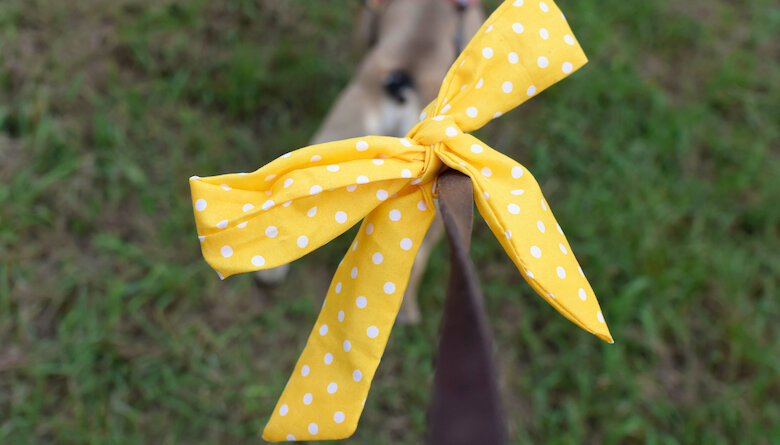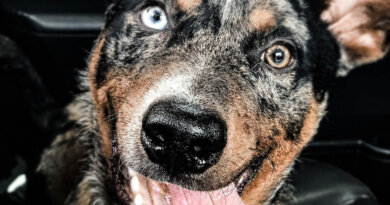What You Need to Know About Yellow Dogs and DINOS
I grew up around horses. In the horse world, if you tie a red ribbon in your horse’s tail, everyone knows that means your horse kicks – so you don’t walk behind that horse, or ride your own horse too close to that horse’s back end. If you do, and you get kicked, it’s your own fault. So, everyone stays away from the rear end of a horse with a red ribbon in her tail. There is an active effort in the dog world to do something similar with the color yellow to protect dogs who need others to respect a space bubble around them as well as educate people about appropriate interactions with dogs in public in general (DINOS – Dog In Need Of Space).
A Yellow Dog or DINOS may be aggressive, but is not necessarily so. He may be fearful and/or reactive, and needs people or other dogs not to get too close. He may be in pain – recovering from recent surgery, or arthritic, and again, needs dogs and humans not to pester him. He may just be too friendly and his human doesn’t want to constantly have to deal with him jumping up on people. He may be in training, and needs to focus on his tasks-at-hand rather than being intruded upon; a service dog, perhaps, or a dog just in the early stages of his good manners training. Perhaps he’s simply the canine companion of a human who wants to keep distance between herself and her dog, and others.
The Yellow Dog Project is a not-for-profit organization promoting the concept of “yellow means caution” for dogs, and they have representatives around the world, in North and South America, parts of Africa, Asia, Russia, Australia, and numerous European countries. They utilize volunteers globally to help educate dog owners and others, and offer Yellow Dog volunteer opportunities, resources and products on their website and Facebook page.
DINOS was launched in 2012 by founder, professional dog walker and Certified Compassion Fatigue Educator, Jessica Dolce. As a dog walker, she faced regular encounters with humans who allowed their dogs to inappropriately approach the dogs she was professionally responsible for, many of whom didn’t appreciate other dogs in their faces. She calls these people MDIFs, because they often approach with a big smile on their faces while proclaiming enthusiastically, “It’s okay, My Dog Is Friendly.” Fed up with these encounters, she started a project to educate both dog owners and non-dog owners about better ways to interact with dogs in the real world. Her website offers a wide variety of resources both for those who have DINOS as well as those who want to help educate the rest of the world about how to interact appropriately with dogs in public. You can find DINOS information and resources on their website and Facebook page.
It is certainly no fun for a dog owner (or dog walker, or dog trainer) to constantly have to ward off unsolicited approaches, and it’s even worse when your dog does have reactive or aggressive behaviors. I would love to see yellow vests, scarves and ribbons become as well-known a “stay away” signal in the dog world as a red ribbon in a horse’s tail is in the horse world. Whether you purchase and utilize dog-space education products for your own Yellow Dog/DINOS, sign up to volunteer for the Yellow Dog Project, or share educational products in your community, (you can find the Yellow Dog poster online, free download, print, make copies and post them around your neighborhood), you can help these groups help make the world a safer and happier place for dogs and the people who love them.
Read Next: Aggression Unpacked, May 2019





